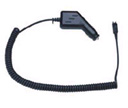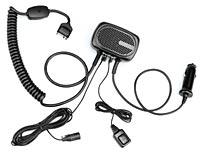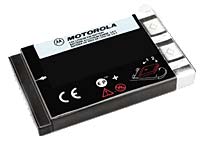|
There are two essential factors to be addressed in selecting cell phone service. The first is the service provider and the rate plan. The second consideration is the phone itself. Unfortunately, many people just take whatever is being offered at a special price. As a general rule, it would be well to remember that the lowest priced model is rarely the best value and the reason most people offer sale prices is because they have too many of something that people are not buying! Having said that, lets review the features that should be a part of making your choice in selecting the right wireless phone for your purpose. Here is a basic glossary of terms you need to know:
Bands and modes Cell phones basically operate in two frequency bands 800 MHz and 1900 MHz in either analog or digital formats. Analog phones operate well in both urban and rural area using the 800 MHz band. Digital phones tend to work mainly along major highways and in urban area. Most digital phones, with the exception of Nextel operate in the 1900 MHz band. Signal quality, clarity of reception, and privacy are the main benefits of digital service. As a rule, digital service is always preferred but with the capability of communicating of a secondary analog network in rural areas if required. A phone with analog and digital capability is known as a dual mode phone. A tri-mode phone is one that is capable of operating on both analog and digital networks in the 800 and 1900 MHz bands as well as other digital networks. Most SunCom and AT&T phones are tri-mode capable. Most Sprint phones are dual mode capable. Nextel phones are single mode only for use on the Nextel system (or SouthernLinc as applicable).
Brand preference We all have favorite brands. With Nextel or SouthernLinc, you have one choice Motorola, who developed the technology used by both companies. Worldwide, Nokia is far and away the brand of choice for all the other suppliers with the exception of Sprint where Kyocera, Samsung, Sanyo and Sony are the main choices. With the other providers Cingular, SunCom, Verizon, and VoiceStream, Nokia is generally the first choice followed by Ericsson, Audiovox and Motorola. There are other brands including some big names like Panasonic and Seimens but are not among the consumers top choices.
Features - The basic difference in cell phone prices will be reflected in their ability to provide specific user functions. The least expensive cell phones have only the ability to alert you by ringer (or multiple ring tones in some cases). The better phones will also have the ability to silently alert you by switching to a vibrator mode. The better cell phones will have a built in speaker phone while the best ones will have premium features like voice dialing, large address books and the ability send and receive text messages (with predictive text messaging being the most sophisticated). Some models have built in modems for connection to the Internet and even snap on keyboards. Some of the newer Nextel models even have built in Java applications and high level games. Todays phones can be a whole lot more than just a phone its just a matter of what you want and how much you are willing to pay.
Functions - Some cell phones are just cell phones. Others have built in paging (both numeric and text), while others have limited Internet access capability and some have a built in digital 2-way radio. The 2-way radio feature offered by Nextel provides instant connection over a broad geographic area with no dialing required. This is a very popular feature. A similar feature offered by other providers provides direct access between phones on the same operating system (SunCom-to-SunCom etc.) This feature is dependant upon the services offered by the service provider.
Health concerns The feature that makes ones phone perform better than another is the amount of radiation emitted through the antenna. Some phones are very efficient (such as Nokia); others are not so efficient (such as the Motorola StarTac models). The phones may have an equal output power rating, but it is the radiated power that makes the difference in how well the phone performs. The trick is to get a good performing phone with a low SAR rating. You can check the SAR ratings of the most popular phones by referring to the New4u section on this web site. By the way a good hands free kit or mobile speakerphone kit is a good option both from the standpoint of health and convenience.
Specifications Check things like battery life, cost of replacement batteries, type of battery (a Lithium-Ion battery is generally best, followed by Nickel Metal-Hydride, and lastly Nickel Cadmium).
Style Means nothing except that it is a major consideration for most of us. Small is good but it can mean a sacrifice both in terms performance, sound quality, and battery life. Sleek and thin makes a phone easier to wear but not necessarily easier to use. Most of us want buttons we can use with ease and displays we can see. As a general rule, flip style units will be smaller, more compact, and easier to wear without any major sacrifice in performance. It should also be noted that flip style phones will generally cost more than a comparable single piece unit.
A few words about equipment cost It may come as a great surprise to many people, but cell phones are generally sold for less than what they cost! How can that be? Why would anyone sell something for less than cost? The answer is simple - you make it up in volume! If that doesnt make any sense to you, don't feel alone, but it all goes back to some business models that have been around all through recorded history. It goes something like this.
You give the farmer seeds, so he will buy fertilizer and equipment. By controlling the things that are necessary for the seed to grow, you ultimately control food, which is a necessity. A cell phone marketing plan works a little differently. First you get everyone using cell phones (i.e. the phone becomes a necessity). After it has become a necessity, you sell airtime (use of the network) at ever increasing rates. This principal has been applied to railroads/tracks, automobiles/gasoline, and many other commodities that we take for granted today.
In a nutshell, there is no such thing as a free phone, or even a $50 phone. The real cost of a fifty dollar phone is more likely to be one hundred and fifty dollars or more. The cell phone company is actually paying (or losing) $100 per phone as a cost of adding more subscribers. The cell phone companies generally don't make a profit. The fuel that runs their engine is investor capital, both from banks (loans), subsidies (government), and the sale of stock. As long as significant numbers of subscribers are added, the capital comes in. The debt is pushed forward with the presumption that one day there will be enough money to pay off the debt. We dont know of any example where this has ever happened. Generally the company will reorganize (bankruptcy) to reduce debt or sell to another company who incorporates the debt within their own.
Now that you have received your basic lesson in modern business economics, you now know that you can only get these super prices WITH A NEW ACTIVATION (i.e. when you become a Subscriber). If your phone malfunctions, you have to pay a price that actually represents the true cost of the phone for a replacement. The cost of repair can often exceed the price of a replacement phone allowing for high labor cost associated with highly trained electronic technicians coupled with the cost of replacement parts. Even the cost of a replacement battery often represents a cost higher than the cost of a phone purchased with a new activation.
The point being made is that if your phone requires repair, your best alternative is often to purchase a new phone, even at the higher real cost. When it comes time to replace a battery, choose the RIGHT battery, not the least expensive (More about this later).
|  |
|
Accessories and options The number one accessory item used with cell phones is a handsfree kit. These devices provide privacy and protection from high levels of radiation when the phone is operated near the head. By leaving the phone on your belt or in your car seat, you are minimizing potentially harmful RF exposure, providing privacy through the earpiece, and reducing driving distractions (possibly the most important consideration of all). Since most cell phones can operate hands free (the exception being Nextel & SouthernLinc in the digital radio mode), these devices are a recommended option. Prices range from $19.99 to $39.99 depending on brand and model.  The second most preferred option for cell phones is a car charger. They come in very handy when travelling or when you forget to charge your battery. Cost on original factory equipment models typically range from under $24 to $50. One word of caution. We generally recommend purchasing ONLY factory originals. Aftermarket models from a variety of manufacturers are available with widely differing levels of quality. Some can catch on fire and are extremely dangerous. If in doubt, ALWAYS stick with the factory original.  Traditional car kits provide a useful hands free option while driving along with battery charging and optional external antenna. Prices range from under $100 to over $200 depending on brand and model EXCLUDING installation. Installation costs can easily exceed $100 or more which makes this a rather pricey option. If you can live without the external antenna connection, you may want to consider a cigarette lighter plug in type unit which requires no installation and an equipment cost of under $50. We haven't tried one, but one unit advertised on TV plays your phone audio through your car radio. Nice idea! Can't comment on the quality or performance, but it's relatively inexpensive and in our opinion, worth consideration.  A spare battery has many benefits. By periodically rotating batteries, you considerably extend the life of BOTH batteries. Normally, most people avoid completely depleting their batteries when in reality, completely discharging a battery conditions or exercises the cells which results in longer life.
Picking a spare battery is mainly based on three factors - chemistry type, capacity, and warranty. Price is NOT a primary consideration since low cost after market batteries are rarely a good investment. We recommend using only original equipment manufacturer's (OEM) batteries or batteries by Alexander Technologies, which have a three-year warranty. In the long run, a battery of good quality is your best investment.
Battery chemistry is equally important. Nickel Cadmium (Ni-Cd) batteries are commonly used in all types of devices but rarely represent the best value. The reason is that the chemistry involves cadmium, a heavy metal that is toxic to both the environment and YOU! Ni-Cd batteries must be returned to an authorized recycling center and treated as TOXIC waste. This adds to the operating cost. Ni-Cd batteries will also develop a "memory" or reduced capacity caused by overcharging. As a result, the useful life of a Ni-Cd battery rarely exceeds 12 months.
Nickel Metal-Hydride batteries are environmentally clean are far less susceptible to reduced capacity as a result of memory. If you have a choice between Ni-Cd and Ni-MH, our recommendation is to choose the Ni-MH. Average operating life is 18 months.
The best rechargeable battery currently available is the Lithium-Ion. This is the cleanest battery available. It is memory free, non-toxic, and has the longest operating life - typically two years or more.
Battery capacity determines how long your battery lasts between charges. The higher the capacity, the longer you will be able to talk. Battery capacity is measured in milliamp (mAh) hours. If you can purchase a 1000 mAh battery for slightly more than a 600-mAh battery, go for the higher capacity.
Aside from overcharging, the number one factor affecting the battery life in the number of times the battery is charges. The more times you charge a battery, the more you diminish the life cycle. If you purchase a high capacity battery, you don't have to charge it as often. Simple math tells you that the high capacity battery is your best investment!  A final comment about batteries. If at all possible, avoid using an "overnight" charger. These chargers apply a constant charge rate and are designed to fully charge a battery over a 12-hour period. The problem is that if the battery is not fully depleted, the charger continues to apply current after the battery is fully charged. This causes a heat built up, cell damage, and shortened battery life.
A better choice is a rapid charger that automatically reduces the charging current when the battery is fully charged. Better yet, get a rapid CONDITIONING charger that fully depletes the battery, and then applies a rapid charge. A good rapid conditioning charger will pay for itself.
|
 |
 |
 |
|
|
 |
 |
 |
|
|

